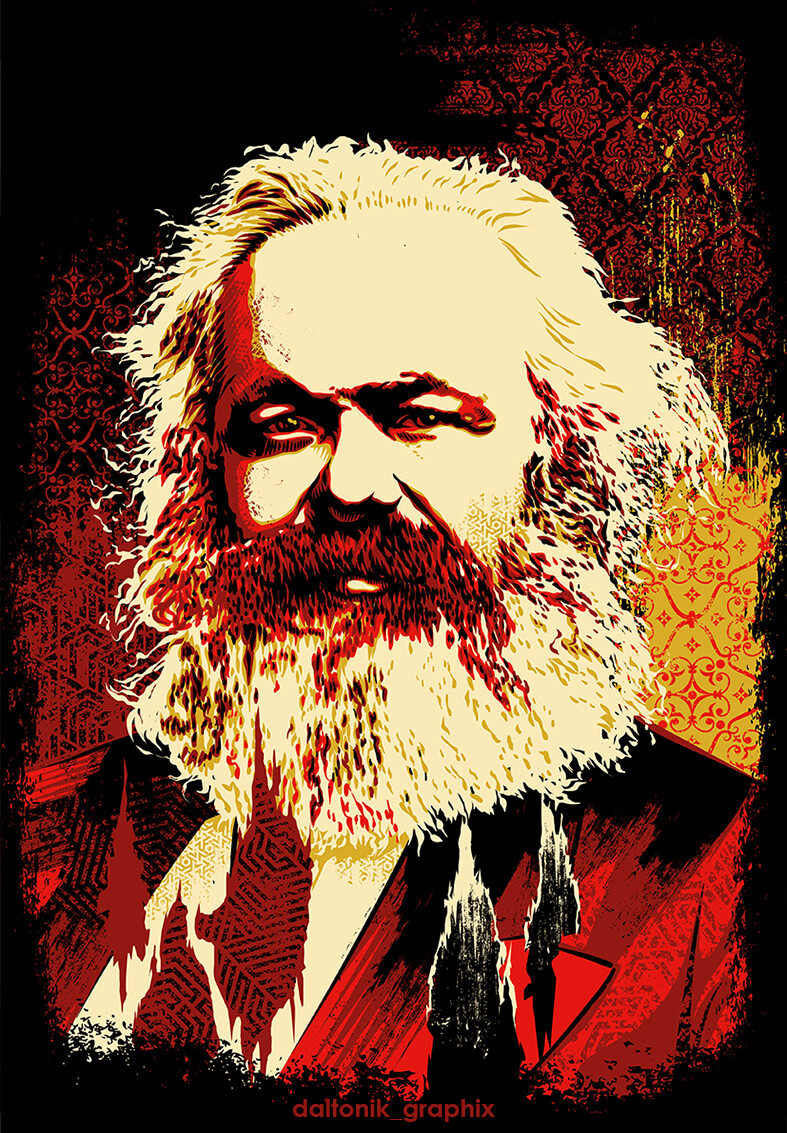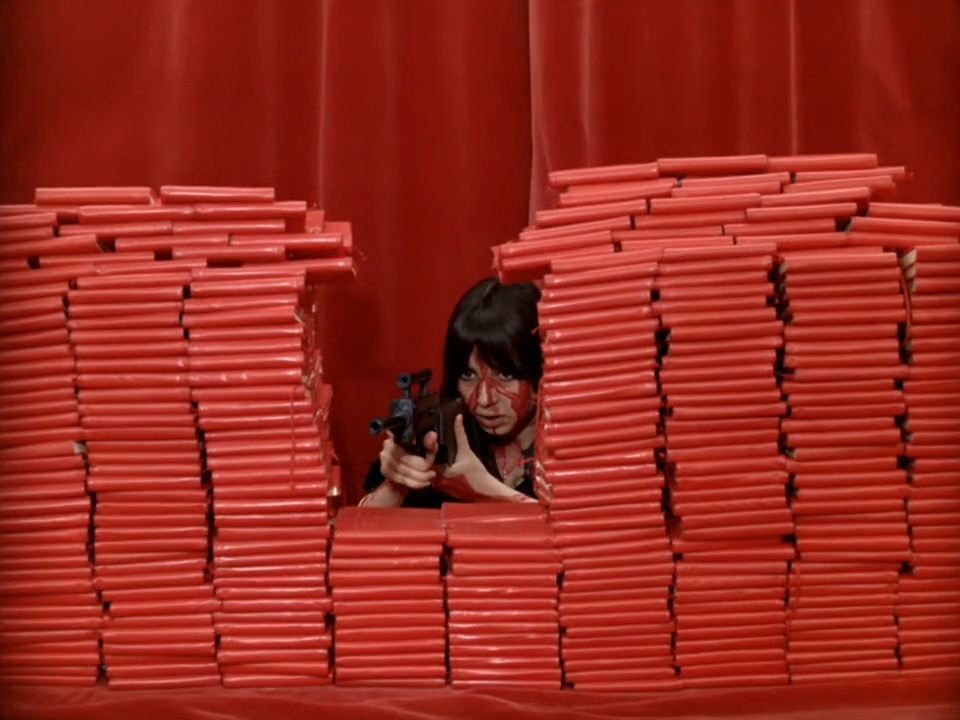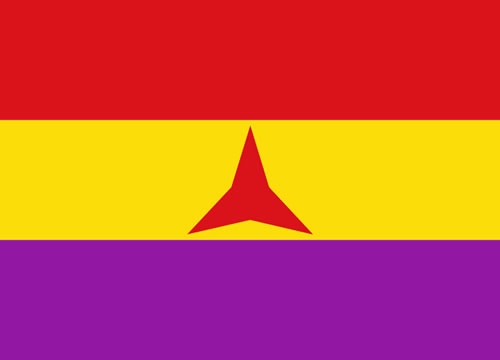I had this in a comment on another post but I just started finding so many great quotes. I've never seen someone undertake to explain Sendero Luminoso before and I'm glad I found kites.
To call this a debate would be to overstate the claims of the PPW universalists. Debates require that both sides develop their positions and justify them with evidence, and one of the consequences of the internet is that any asshole with a keyboard and a connection can pretend to have great knowledge of revolutionary theory. But given that many millenials newly awakened to the horrors of capitalism-imperialism and looking into revolution, communism, and Maoism have encountered this “debate” online, it is worth taking this opportunity to address some real questions of revolutionary strategy that have come up along the way. These questions include:
- What can we learn from the experience of the people’s war in Peru?
- What demographic shifts have taken place since the Chinese revolution and what are their implications for revolutionary strategy?
- What is Maosim? Why are most self-proclaimed Maoists so dogmatic?
- Why has there been so much disarray in the international communist movement since the 1976 counterrevolutionary coup in China?
- What is a correct military strategy for revolution in imperialist countries?
- What is the relationship between the subjective factor and objective conditions in the revolutionary process?
- What is the nature of bourgeois state power, and how can communists in imperialist countries build up a force that can overthrow it?
The greatest weakness of Sendero Luminoso and Chairman Gonzalo is that many of its/his written statements are dogmatic as fuck. There, I said it. There is a strong religiosity emanating from many of these statements that projects a grand and godly faith in the impending victory of the revolution, even suggesting the strategic offensive of the world revolution (in the 1980s?!?), rather than a compelling, nuanced analysis of the state of the world and the prospects for and difficulties of revolution. We can understand why in the 1980s, with the revolutionary upsurge of the 1960s over and following the tremendous loss of proletarian state power in China in 1976, with a religious and spiritual population as their mass base, and with the real need for revolutionary sacrifice, Sendero may have felt this approach was necessary. Maybe we can even accept it in the Buddhist sense of the term, learning to embrace and move through the negatives that are part of our historical and present-day experiences as communists, rather than ignoring or fearing them. But we don’t need to repeat it; we can take the good and leave out the bad. The PPW universalists have instead decided to take the worst attribute of Sendero Luminoso, magnify it, and shout it from the rooftops (or more accurately, click it from their keyboards).
In 1962, a young Abimael Guzmán (AKA Chairman Gonzalo) was appointed professor of philosophy at the National University of San Cristóbal de Huamanga in the capital of the Ayacucho region. There, in rousing lectures that earned him the nickname “Champú,” Professor Guzmán and his comrades used their faculty positions to present students with a historical materialist understanding of society and the need for revolution. By the late 1960s, Sendero Luminoso had virtual control over the university, including administrative functions, and had a particularly strong position within the teacher’s college. They used these positions to recruit the cadre who would go on to form the backbone of the people’s war. Moreover, from the teacher’s college, they dispatched newly-minted university graduates to the surrounding peasant communities in the Ayacucho region as school teachers, where they in turn conducted social investigation and organized those peasant communities in preparation for launching the people’s war.
Gonzalo’s strategic genius was in taking advantage of the bourgeoisie’s rapid expansion of education to gain temporary footholds within the bourgeois ideological state apparatuses and use these positions to accumulate forces for revolution—in other words, in his correct reading of the conjuncture, not prophetic divination. These positions were always temporary, and Sendero lost its control over the University of Huamanga by the mid 1970s. But the damage was done, and Sendero cadre trained at the university were already organizing peasants all over Ayacucho—the region that would become the first stronghold of the people’s war in the early 1980s. Professor Guzmán took a position at La Cantuta teacher’s college on the outskirts of Lima in the mid-to-late 1970s, recruiting more teachers into Sendero’s ranks. Sendero would continue to employ this strategy in other places throughout the people’s war. For example, it deployed 100 teachers in schools in the slums of the Central Highway region east of Lima, helping the people’s war to advance towards the center of bourgeois power. Here there is a broader lesson: the bourgeoisie’s ideological hegemony over the masses is something that has to be forged and continually reforged, and at moments when the nature of this hegemony is in transition, as it was when the Peruvian bourgeoisie massively expanded education in part to bring more peripheral populations under its ideological hegemony, communists can seize opportunities.
MLMs have constant pointless arguments on the universality of PPW when the actual question should be whether PPW is possible in their particular region of the world. In other words, "is PPW universal?" is a completely academic question while "is PPW applicable in the US given the particular material, historical, and cultural conditions of the US?" is an actual meaningful question. Notice that "PPW is applicable in the US because PPW is universal." isn't an actual answer because it doesn't address the particular conditions of the US. Of course, once you formulate an answer that looks like "PPW is applicable in the US because of X, Y, and Z which is possible due to the A, B, and C conditions of the US," then it no longer matters whether PPW is universal or not.
So why do MLMs focus so much on whether PPW is universal or not. Because they don't have a good answer on whether it's applicable in their particular region of the world. Because they're using "PPW is universal, so it's applicable everywhere" as a massive crutch over questions about whether it's applicable in where they live. Their difficulty in properly using material truths to make their case means they'll slide into idealism.
Thanks for reading thoroughly and paying attention to what the author actually says and the questions he raises about the applicability of PPW to the US
I don’t think the author totally understands the social context of Peru very well for example he seems to lump teachers and rural uni professors with the petty bourgeoisie and the description of urbanization in Peru is severely lacking as what forced this migration was the introduction of market dynamics and land dispossession.
He does touch on the racism which fully stratified society between tiny minority of wealthy Euro whites and the indigenous and African poor. He calls the central government a “bourgeois government” but only because there was a parliament? There was a weak “bourgeoisie” in the traditional sense because there was hardly any advanced industry and, economically, Peru produced raw materials for export (lumber, minerals) and most production of finished goods and food stuffs was for domestic consumption. Its oligarchy was comprised of compradors, landowners and bankers.
Importantly there is also zero discussion of the agrarian reforms which redistributed land to the peasantry who worked it. Cooperatives were set up and individual ownership was prohibited. The reforms were enacted unevenly across the country and it spurred certain areas to embrace Sendero more readily than others.
SL became sectarian ultras who viewed unallied rural peasants as “gamonales.” The movement was a failure because it provided no relief from oppression.
Being rooted to the Peruvian masses is when you nail dead dogs with the name of some random Chinese dude onto telephone poles.
Good point, I guess there's literally nothing to be learned from a movement that took a bunch of university students, taught them Quechua, sent them to the poor countryside and city slums, and successfully motivated the people there to engage in an armed struggle.
It doesn't strike me as particularly Marxist to use a relatively small number of incidents as a reason not to bloody our hands by, uh... investigating and debating both successes and failures of any given socialist movement.
In general, almost every single anticolonial struggle or movement that took place in Africa is more worthy of study than the Shining Path, whether it's the Mau Mau, the FLN, the MPLA, the PAIGC, the ANC, the anti-apartheid struggle in general, Lumumba's Congo, Nkrumah's Ghana, Ture's Guinea, Nasser's Egypt, Sankara's Burkina Faso, Nyerere's Tanzania, and so on. Even their failures and frauds like the TPLF are more worthy of study for the simple reason the TPLF is still around, having only recently agreed to a ceasefire with the Ethiopian state.
I will happily engage with any study I find of those movements, and probably share it here. Frankly I didn't know much about the SL beyond the baby boiling before finding this article, and a quick scroll through c/marxism shows that I'm the only person who's posted anything about 3rd world movements later than Mao in months. This has been educational.
A very fun article that illuminates the reader on the thought processes of the ultra-Left in regards to how their dogmatic and unflexible drive to make reality fit their theories leads them to either undermine or betray the Communist movement every step of the way - from building the Communist movement up in a Bourgeois states to building towards socialism in communist controlled states -
The phrasemongers can dress up their actions in as much flowery words of revolution until they go red in the face but it does not change the fact that the results of their material actions speak louder than words, and from every point in history, from the Russian Revolution to Grenada, the actions of the ultra-Left, which at best acted as a stumbling block of the Communist movement and at worst acted as an 'unwitting' agent in capitalist restoration, has proven that it is not only an ideological dead end but also a feedback loop into perpetuating the capitalist economic system.
Here I have to disagree with Belisario’s characterization of Sendero’s military operations in Lima as left opportunism based on an illusion of quick victory through urban insurrection. Belisario is correct that Sendero’s declaration of the people’s war reaching strategic equilibrium in the late 1980s was likely overblown rhetoric (consistent with Sendero’s tendency to make dogmatic declarations). But again, we shouldn’t let Sendero’s rhetoric and dogmatic style get in the way of the serious strategic questions raised by its practice. The fact is, as documented in Mike Davis’s excellent book Planet of Slums, as of ten years ago there were over one billion people living in slums worldwide (and that number has likely risen), and the global urban population now outstrips the rural. The oppressed nations don’t look so much like China in the 1930s and ’40s. Revolutionary strategy in such countries will have to deal with these new realities, or risk turning Mao’s tremendous contributions on military strategy into relics of the past.
During the 1980s, when SAPs wreaked havoc on the oppressed nations and spurred huge migrations of peasants who became proletarians in the urban slums, communists were largely absent from this process and thus failed to take advantage of a situation that could have resulted in major revolutionary advances. This had a lot to do with the general disarray of the ICM at the time, but it also had something to do with stale and dogmatic thinking that could not adapt protracted people’s war to new circumstances. Sendero was an exception, and while its rhetoric was stale and dogmatic, its strategy and practice on slums, rural to urban migration, and the urban military domain were innovative and effective. We need further study of this experience rooted in historical research rather than repetition of rhetoric.
And while we’re at it, there needs to be serious debate among communists over the character of the oppressed nations today. To what extent are they still semi-feudal? What is the class composition and geographic demographics of these societies today? How do we understand countries that are still in some ways exploited by foreign capital and still have considerable peasant populations but are playing an expansionist or even imperialist role internationally? What are the implications of all this for revolutionary strategy? What can we learn from urban military conflicts from Algiers to Mogadishu to Sadr City? The point of this debate should not be to fit social formations into categories, but to really analyze the concrete conditions. Maybe here—and only here—we can unite with Tinder users on the principle of “I don’t like labels.”
A further point of consideration posed by the experience of people’s war in Peru and social formations in the oppressed nations today is how stable revolutionary base areas can be. The Peruvian military, with US backing, had substantial training, sophistication, and hardware. Its reach could easily extend into the Ayacucho highlands and coca-growing Upper Huallaga Valley, especially with a fleet of helicopters and DEA aerial surveillance at its disposal. Owing to these conditions, Sendero’s rural base areas were likely never as stable as Yenan, so rigidly sticking to the strategy of carving out red political power in a territorial domain, developing a large revolutionary army there capable of positional warfare, and then seizing the cities from the countryside would have likely been ineffective. This made urban operations all the more important, as “seizing the cities” would have to come from the inside—a radical transformation of the strategy of protracted people’s war.
you guys were actually debating PPW? i thought it was just a funny joke to answer every question with "Protracted People's War. It's Universally Applicable" :homer-bye:
In his articles criticizing the church of PPW universalism, Jose Maria Sison makes the correct observation that at present there doesn’t appear to be any communist forces in imperialist countries with the adequate strength—including roots among the masses—and in favorable conditions to carry out military actions. Thus the principal task now, for anyone who wants to transform this situation, is to integrate with the masses, build organization among them, recruit communists and develop solid (and secure) communist organization through this work, and develop theory and strategy in relation to this practice.
Joma does not entirely write off the question of revolutionaries and the masses they lead learning how to use hardware now. He gives examples of legally permitted shooting practice clubs and neighborhood defense organizations as instances where this might be appropriate. But Joma warns that connecting the use of hardware, including legally permitted practice with it, with public calls for revolution and revolutionary organization will only result in compromising the security of communist organization and in severe repression of revolutionary organization and the masses before either can be adequately defended. Listen to your elders.
Joma also suggests future hypothetical situations in the imperialist countries where the use of hardware could be appropriate. The Far Right, for example, is arming up and is increasingly responsible for mass shootings and vigilante attacks against non-whites, immigrants, Muslims, and LGBTQ people. Revolutionaries may have to lead people to defend themselves against such attacks. There are two other hypothetical future possibilities I can think of. One, if a geographic region was left devastated by climate change/natural disaster and the bourgeoisie decided to abandon that region, it might be appropriate for revolutionaries to develop active defense of neighborhoods in that region. Two, border regions with conflicts over migration and refugee settlements are increasingly sites of violence by bourgeois state security forces and Far Right vigilantes, and Robert F. Williams-style defense could become appropriate (again, speaking purely hypothetically, not advocating any course of action). But none of these hypothetical possibilities should be confused with the specific strategy of protracted people’s war.
When Sendero did start making strategic moves into Lima, it confronted an organized Left that acted as an impediment to the advance of the people’s war. Union leaders sought to prevent strikes from turning into class struggle. The Izquierda Unida (IU, United Left) held considerable government positions, with its candidate Alfonso Barrantes elected mayor of Lima in 1984 and promising a glass of milk a day for every child. The IU also had considerable authority in some shantytowns established prior to the 1980s. A salient example is Villa El Salvador, a slum governed by the IU in the 1980s and celebrated as a model where slum residents were lifting themselves up through entrepreneurship. The IU program in Villa El Salvador resulted in some slum micro-entrepreneurs getting ahead while many others fell behind, with 46% underemployment by the mid-1980s. Many of the new migrants arriving after 1980 were left to fend for themselves without the benefits of IU clientelism. Consequently, Sendero’s popularity in the face of the failure of Leftist reforms grew, as did its organized strength in the neighborhood. The IU responded to Sendero’s advance and the justified complaints of the masses against IU failures by increasingly standing in the way of the revolution and even siding with the Peruvian military. IU district vice mayor María Elena Moyano openly called for the formation of rondas (anti-Sendero “neighborhood defense organizations” aligned with the Peruvian government) and led a fifty-person “peace” march in Villa El Salvador during Sendero’s February 1992 Lima armed stike. Moyano was subsequently assassinated by Sendero guerrillas. By March 1992, Sendero had the upper hand in CUAVES, the neighborhood-based governing body of Villa El Salvador, and was leading residents in protests demanding the IU municipal government step down, as it had failed to meet the needs of the people and had even allowed the recent establishment of a military base in the district. (All this is documented with citations in Part 3 of the Specter series, which will appear in kites #3 but is already online at revolutionary-initiative.com.)
The point here, when looking at Sendero’s numerous assassinations of union leaders and IU officials and general campaigns to push Leftists out of power and replace them with revolutionary authority, is not that every assassination was necessarily correct. The point is to recognize that Sendero faced an established Left and internationally-funded NGOs that actively worked to prevent the advance of the revolution and to keep the masses accepting paltry reforms that could not resolve the crisis facing the masses of Peru. The revolutionary process in any country with an established Left and NGOs/non-profits will not be so different. The leaders of these impediments to revolution, stuck in reformist, revisionist, and social-service ideologies, constitute part of what the (new) Italian Communist Party [(n)PCI] calls the “regime of preventive counterrevolution,” and will align themselves with the bourgeois state in the face of a revolutionary challenge. To put it bluntly, communist revolution today will be made against the established Left, just as it was in 1917 Russia. In a more recent example—the people’s war in Nepal—the communist revolution was fought in part against the Communist Party of Nepal-United Marxist-Leninist (CPN-UML), which for a time held the cabinet position directly responsible for suppressing the revolution and also governed in some districts where the people’s war was overthrowing local authorities.
In contrast to the kind of discussion about united front strategy I am advocating, the church of PPW universalism revivalists in the US have taken Sendero’s tactics as inspiration for focusing their energies on attacking Leftist organizations, mostly online but sometimes physically, and for the bizarre practice of leaving animal carcasses outside of reformist organizations’ events (?!?). So a reminder is in order: Sendero kept its distance—including literally by focusing on Ayacucho rather than Lima—from turf wars within the Left during its 1970s period of accumulation of forces for people’s war, focusing instead on sinking roots among the basic masses. It was only when Leftist organizations directly stood in the way of the development of red political power and the advance of the people’s war that Sendero mounted attacks on the organized Left. It is this experience, particularly the now-urgent task of sinking roots among the masses, that those attracted to Maoism should learn from rather than the dog carcasses labeled “Deng Xiaoping” that Sendero once hung from telephone poles as a statement against counterrevolutionary betrayal by top Chinese Communist Party leaders.
/\ shots fired




